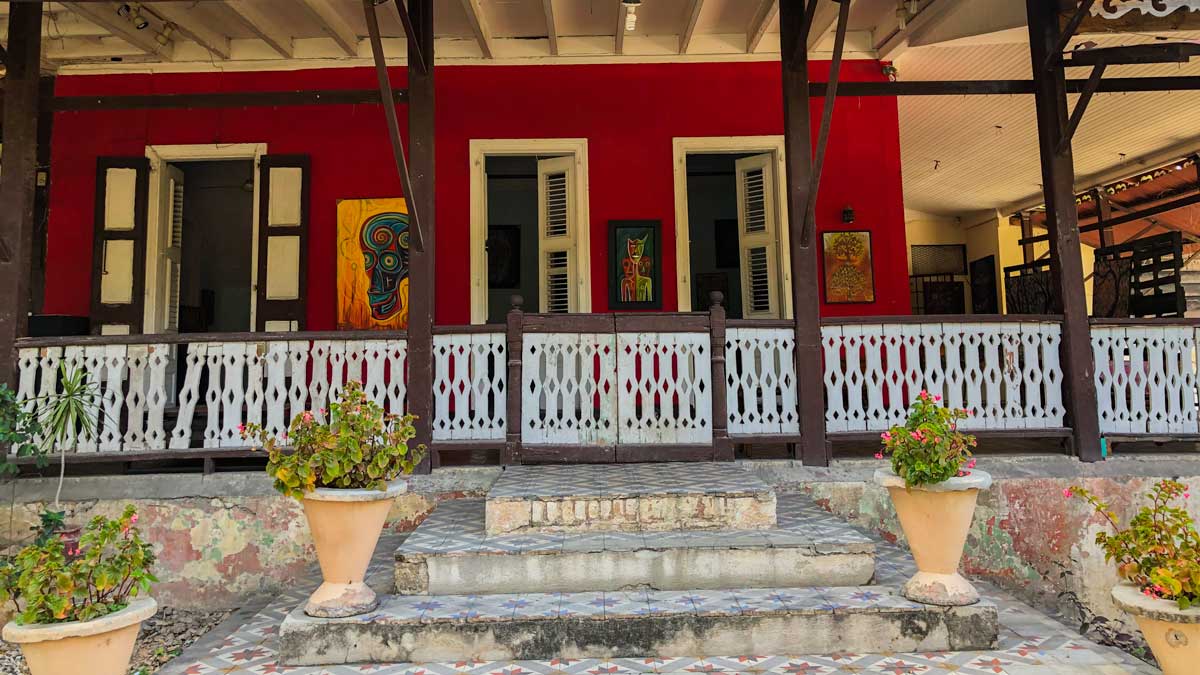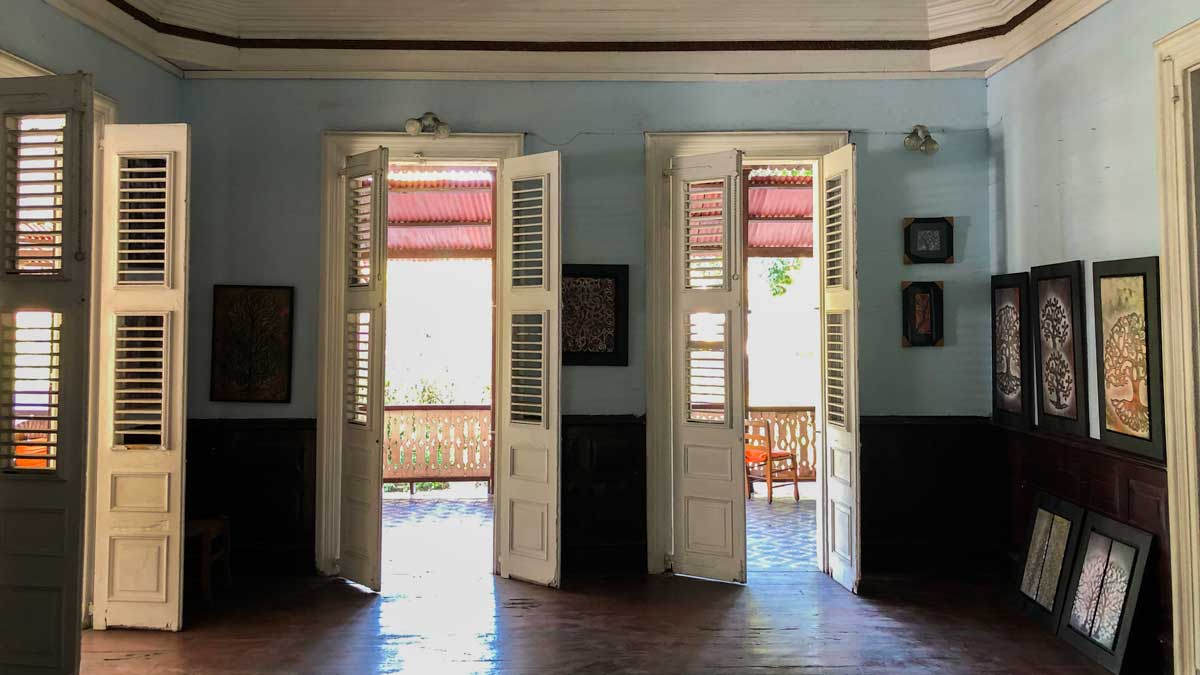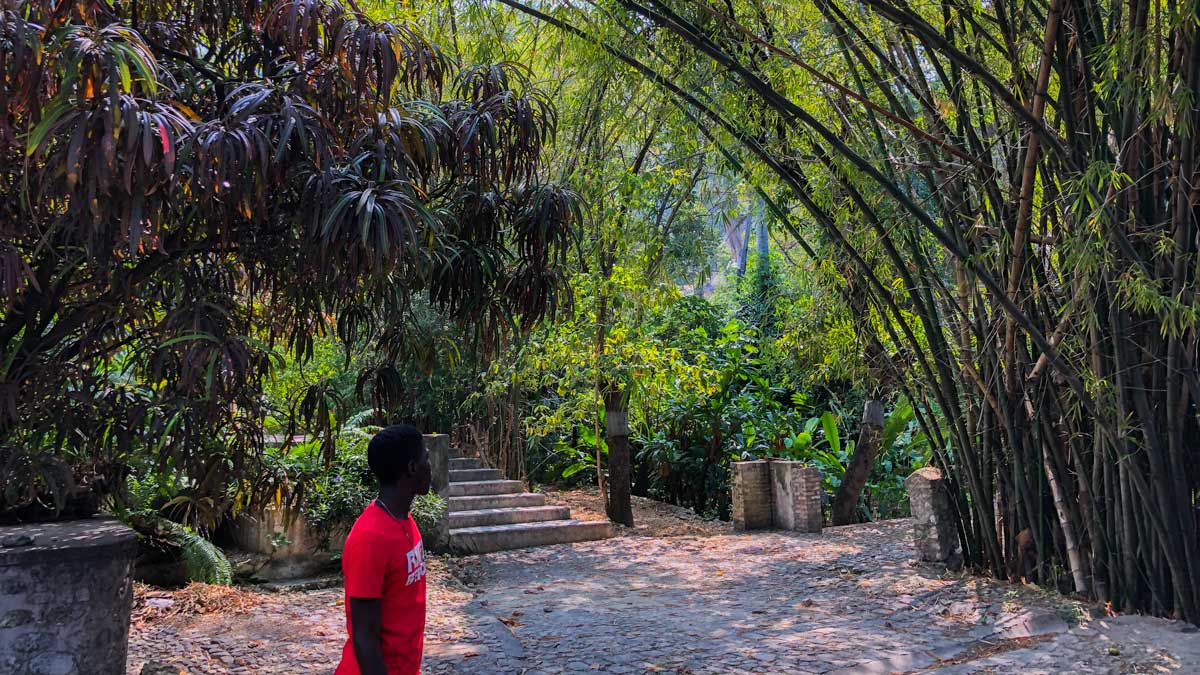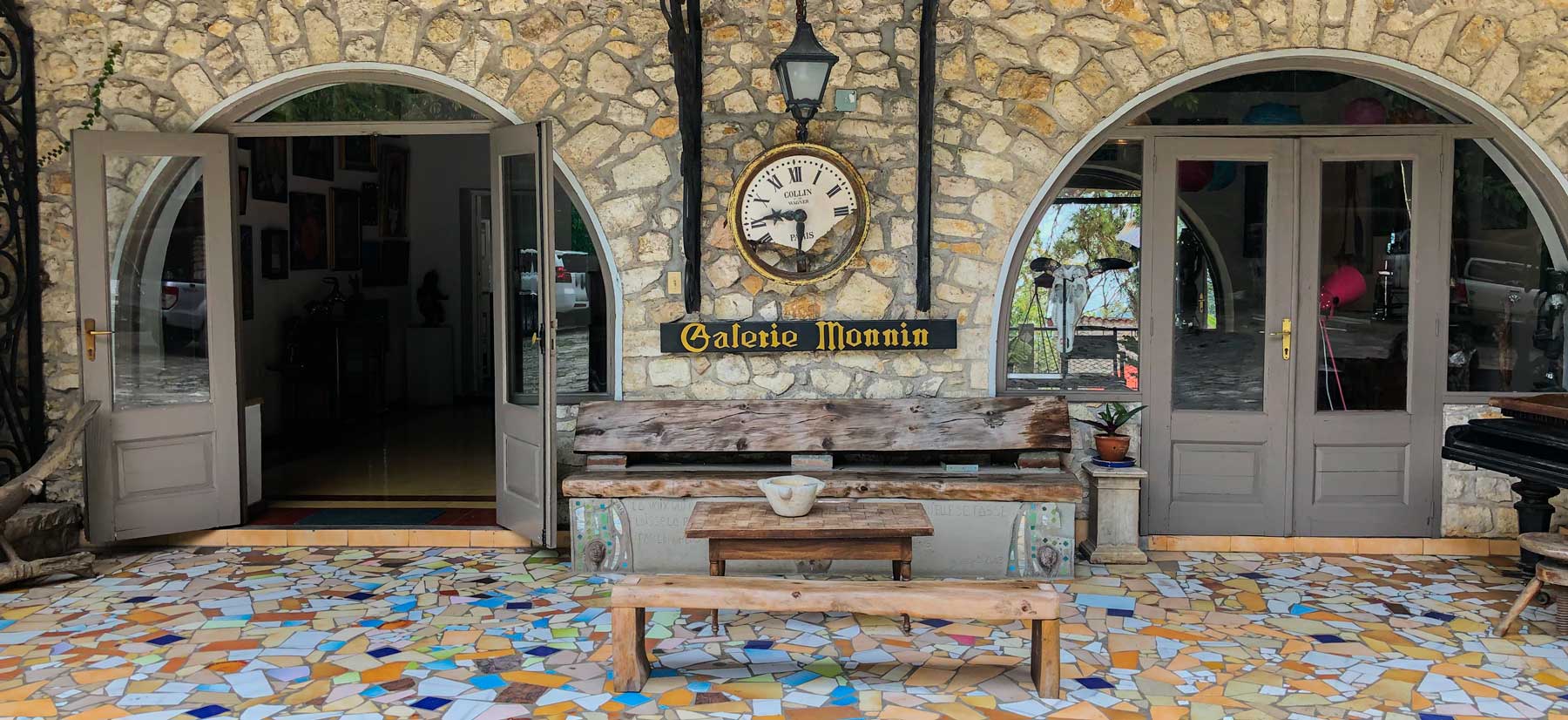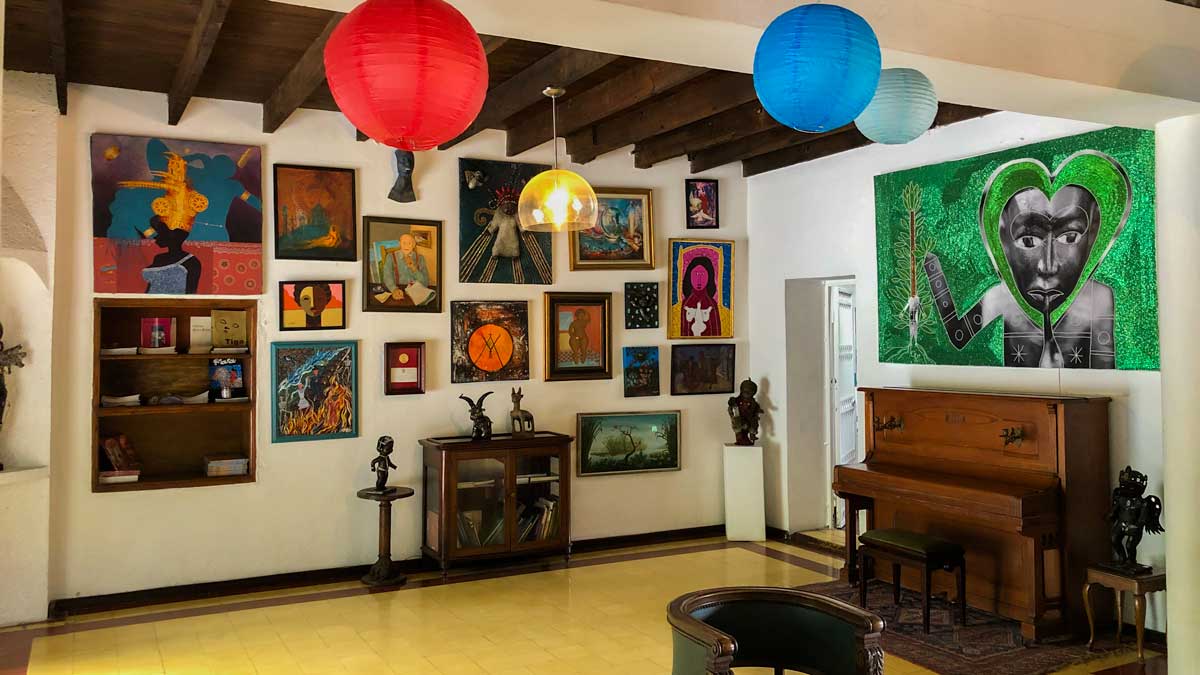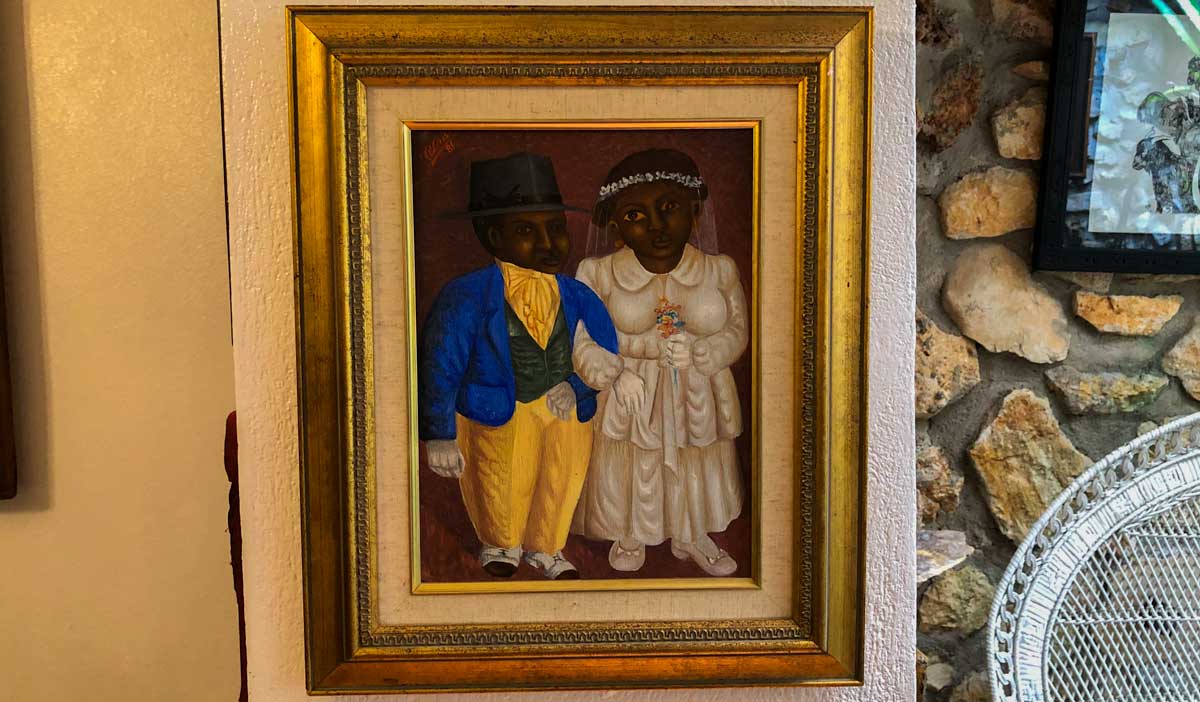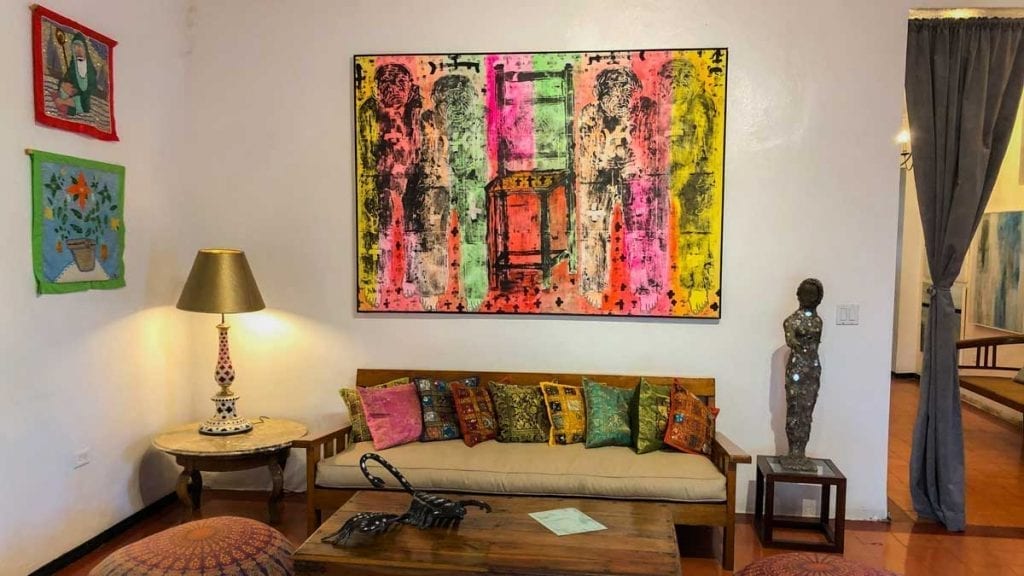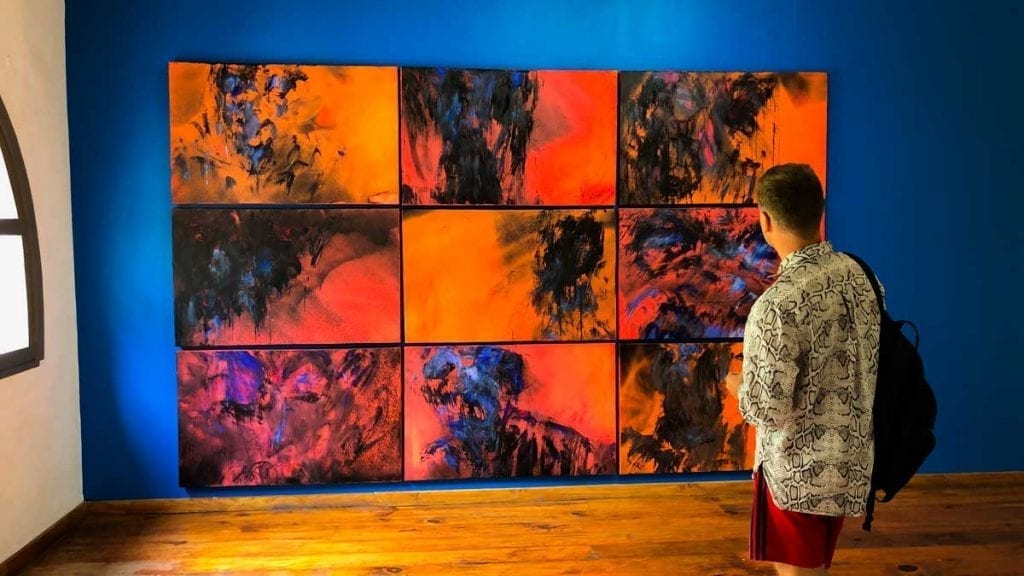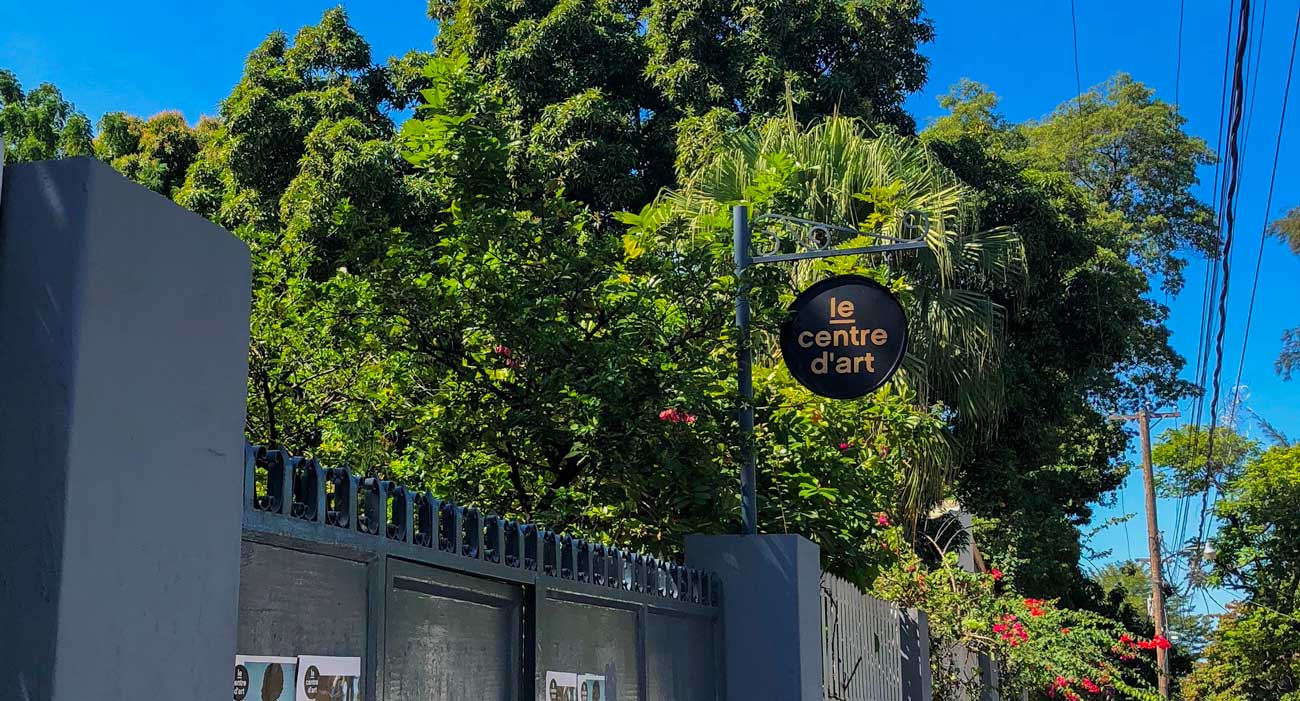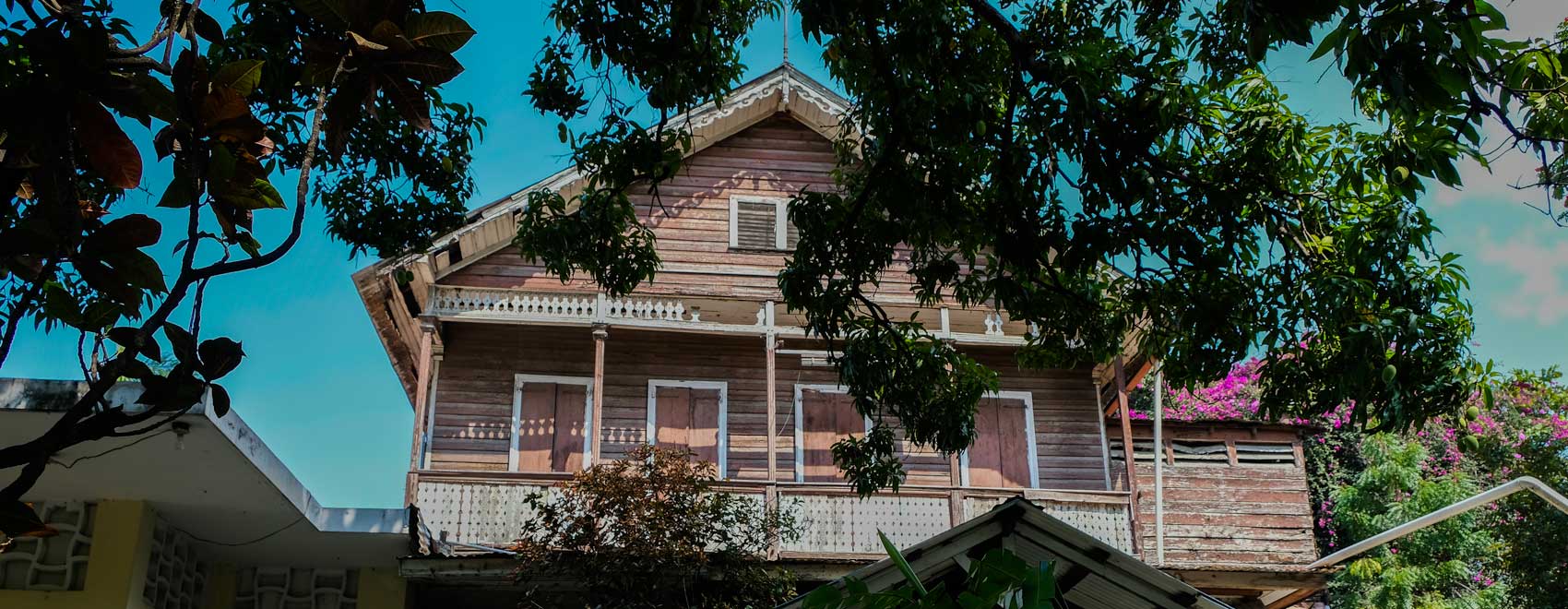
Photo: Franck Fontain
Explore Haiti’s Contemporary Art Scene at Villa Kalewès
Kalewès is the creole word for “hangout” and Villa Kalewès, the gingerbread mansion turned contemporary art gallery, invites you to do just that.
Take a look inside Pétion-Ville’s artist-owned contemporary gallery.
Take a closer look
Situated at the heights of Pétion-Ville, at the end of 99 Rue Gregoire, Villa Kalewès is easily recognizable by the rich gingerbread color of its fairy-tale wooden walls and white lace-like edging. It’s one of the most important gingerbread structures in Pétion-Ville, and remains both in-use and, lucky for us, open to the public.
An exemplary specimen of Haiti’s turn of the century architecture, Villa Kalewès may seem like an odd choice of venue for the capital’s leading contemporary art gallery, but it reflects the innovative spirit that has been drawing crowds since Kalewès reopened its doors to the public in 2014.
Walking up the front steps, you enter onto a covered veranda classically decorated with an intricate mosaic of tiles. You pass through multiple spacious rooms with high vaulted ceilings and sun-drenched windows typical of the gingerbread style, until you reach the courtyard lush with tropical trees and perfume-laden flowers.
A small bar and swimming pool are part of the villa’s history as a private family mansion, but Villa Kalewès is now owned by a contemporary art group called Kollectif 509. It’s the venue of choice for artist workshops, children’s art classes and over 30 art shows since 2014. Looking for an upcoming cultural event to attend? The first Thursday of every month is a salon-style evening the Villa. It features a particular artist and invites discussion around a topic chosen each month.
Villa Kalewès, Petion-Ville
Photo: Franck Fontain
About the collective
Kolektif 509 is the brainchild of Xavier Dalencour and Valerie Noisette, two artists with a passion for the contemporary art scene in Haiti. The idea behind the project evolved from a recognition of the growing need for emerging and established artists in Haiti to have a consistent and artist-owned venue to showcase their work.
“There is a new generation of very talented artists, and there are many artists who are known internationally but not so much in their own country,” said the duo in a recent interview. “We wanted to bring these artists together to show to the public what new innovations are being done in Haitian art today.“
The dedication to showcasing Haitian culture is evident in varied artworks that hang on both the upper and lower floors of the spacious gallery. New methods, styles, and schools are all welcome here.
Artists like Pascale Faublas recently experimented with batik printing. Her fuschia, white and black hearts with Vodou vèvè-inspired motifs drew admiring crowds at a recent all-women’s art show. Equally experimental, Mafalda plays with multi-layered translucent papers and acrylic paint.
Support local artists
While the ambitions of the collective are high, the prices are incredibly reasonable. You can purchase an original painting for as little as $150 US dollars and support the contemporary artists who sometimes struggle to find an audience in Haiti’s art-saturated landscape. The gift shop is stacked full of even more affordable gift ideas, such as contemporary Haitian art prints.
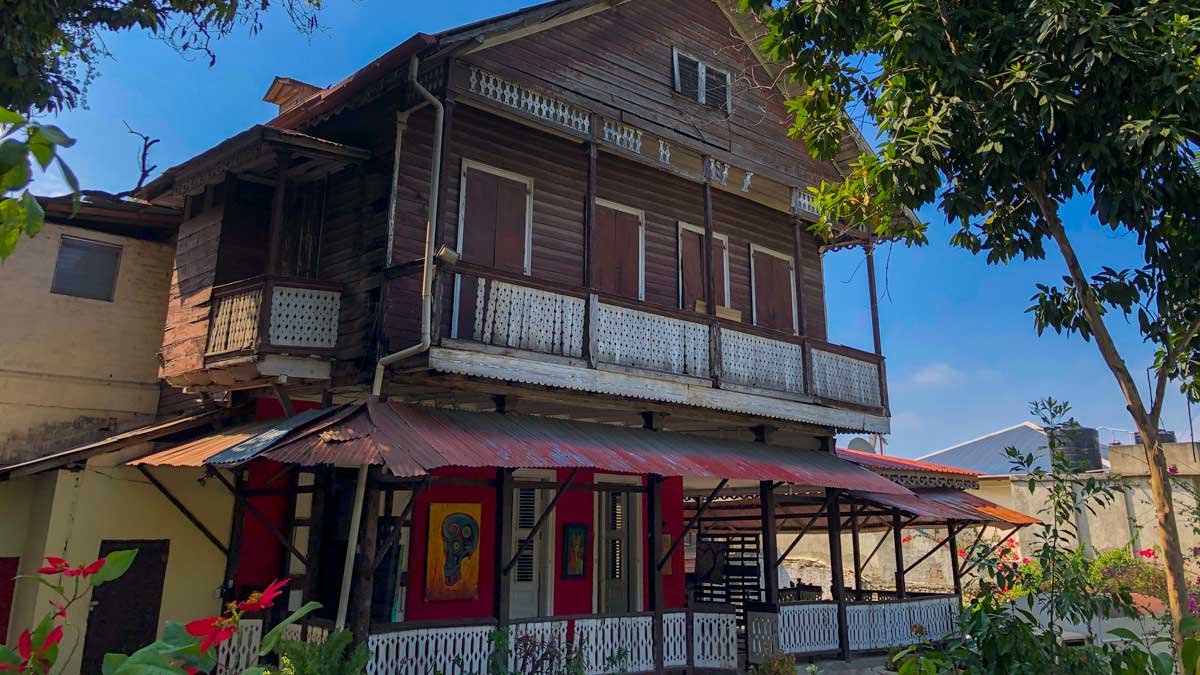
Photo: Anton Lau
Getting there
Thinking of making a stop at this architectural gem? Villa Kalewès isn’t open every day, so make sure to visit during a special event or simply call head to check.
Written by Emily Bauman.
Published November 2018
Find Villa Kalewes
External Links
Find out more about Villa Kalewès on Instagram

Recommended

Paradise for your inbox
Your monthly ticket to Haiti awaits! Get first-hand travel tips, the latest news, and inspiring stories delivered straight to your inbox—no spam, just paradise.


